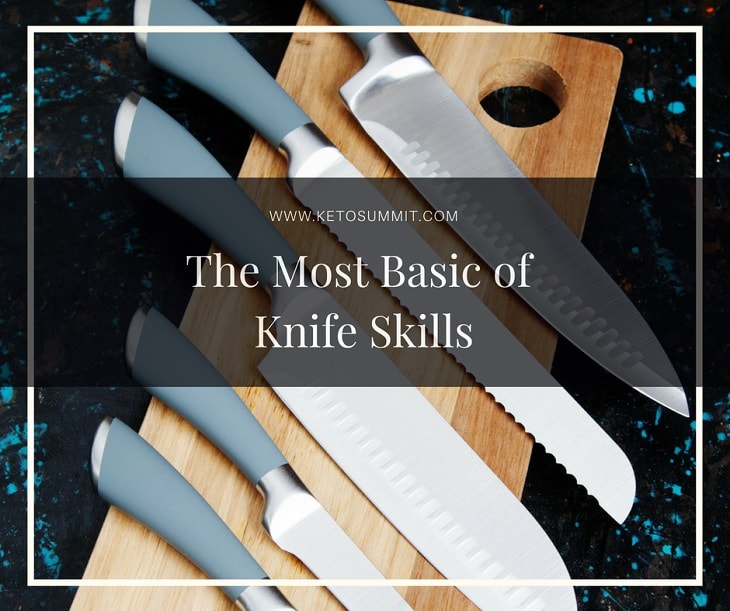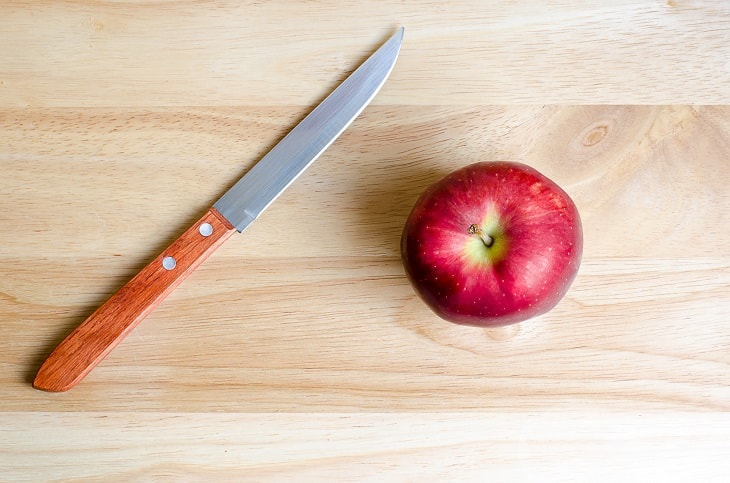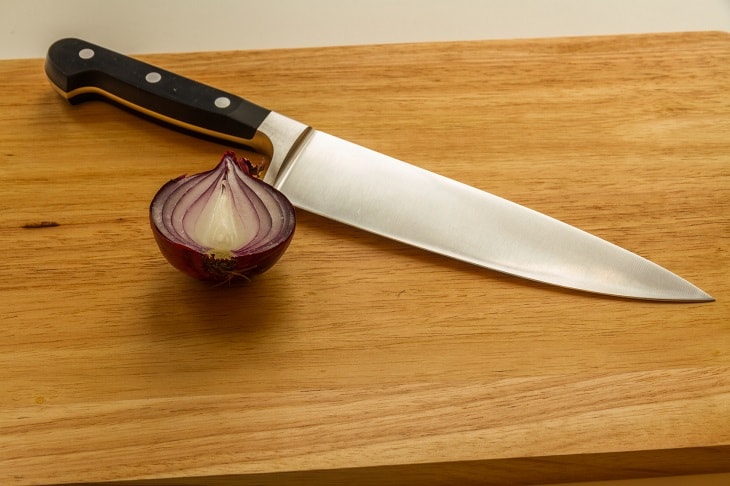The Most Basic of Knife Skills For Cooking
The culinary world can be intimidating. If you have ever looked inside of a professional kitchen it can look like a medieval torture chamber. There are flames, steering oil, and pots full of boiling bones. And, anyone who is there to help out is handed a weapon of razor sharp steel.
Those dangerous tools of pointy metal can seriously do injury to any part of your body if you are not careful. Yet these professionals are swinging them, and chopping them, and using them next to their own hands at such speed that it seems impossible that they won’t lose a finger or two.
These are basic knife skills, and they can only be gained through experience and practice.
The riskiest thing any new cook can do is try to imitate the finesse that these professionals have gained through years of repetition. Anyone who is picking up their first chef knife needs to understand the basics.
A knife is a simple tool, and using one can seem straightforward, but they are also dangerous and should be treated with respect.

Know Your Weapon Before You Begin
Knives come in all shapes and sizes. One of the most important things about knife skills is choosing the right tool for the right job.
If your knife is too small or too big, you could actually injure yourself. It is important to pick a proper knife for each ingredient you are cutting.
There are an incredible amount of knife shapes and styles. There are tiny little turning knives that have a two-inch long curved blade, that is great for small precision work on vegetables and fruit. There are massive cleavers that can chop animal bones. There is even a seemingly endless amount of cheese knives that come in all sorts of designs.
For now, while you begin, there are only a few knives that you will need and should know.
The Paring Knife

Paring knives are great for smaller jobs such as peeling vegetables or deveining shrimp.
Paring knives usually come with a 3- to 4-inch blade with a shape that resembles that of a larger chef knife.
They should have a comfortable, secure feeling in your hand. Paring knives give you the chance to do simple, precision jobs and should not be used for large jobs or else you will tire yourself out.
Often, a paring knife is used with a fruit or vegetable in the hand, just be sure to move slowly and not make any slips.
The Serrated Knife

Serrated knives are most commonly used for slicing bread, but they can also be useful on more delicate ingredients such as tomatoes.
These knives are long, straight blades with teeth along the blade.
It is important to remember a serrated knife does not slice in the same way a chef knife does and should not be pushed through food. Instead, use a sawing motion and allow the knife to do all of the work.
The longer the strides you make the straighter and deeper the knife can cut.
The Chef Knife

The chef knife is your all-purpose blade.
It can handle most jobs from mincing garlic to dicing up a watermelon. The chef knife is a cook’s best friend and you should spend some extra money to get yourself a good knife that will last you a lifetime.
There are many styles of a chef knife with influences from all over. Japanese-style knives are beautiful and great to use.
But, for starters, we recommend that everyone should have the classic French style chef knife.
How To Hold Your Knife
A chef knife should feel firm and secure in your hand without slipping. There are many options for handles designed with ergonomics in mind.
But, you should be able to grip the handle like a firm handshake and be comfortable.
Best practice is to use your knuckles as a guide to where you want your cuts to be. This method is referred to as ‘the claw’ and your fingers should be in such a shape.
With the tips of your fingers bent in slightly they can secure whatever you are cutting without being in the way. While your fingers run along the side of the knife to ensure a straight, uniform cut.
Caring For Your Knife
Some careful practice with your knife and soon you will be slicing, dicing, and chopping like a pro. But another important thing to remember is to take care of your knife, like being certain to dry it when putting it away so it does not develop rust.
You should learn how to sharpen a knife, and after extended use, they should be taken to a professional to have a new edge put on the blade. A dull knife can cause more injuries than a razor sharp one.
As long as you care for your knife and show it the respect it deserves you will be okay.
Never forget that your knife is a dangerous weapon and should be handled safely.
Cutting Tips
Cutting Gentle Ingredients Like Tomato
The chef knife should be kept at optimal sharpness, meaning you should be able to penetrate a tomato with minimal pressure and without squishing the produce. Like the serrated knife, a sawing motion will help to get clean straight cuts with softer jobs.
Cutting Firmer Ingredients Like Onions
Firmer ingredients like an onion work well with having the knife pushed through. To slice an onion use a rocking motion with the tip of your blade staying on, or near, the cutting board and slowly guide it over the produce trying to keep a uniform width of each cut.
Cutting Ingredients With Strong Skin Like Pumpkin
When approaching strong flesh ingredients like squash be sure to have a dry, firm grip on the knife. Your other hand will probably need to secure the squash or give you extra push on the blade. You can protect this hand with a dish towel in case of any slips. Just remember to carry through with your cuts and not stop halfway through.
Ready to get slicing and dicing? Check out our Keto Recipes for inspiration in the kitchen.
